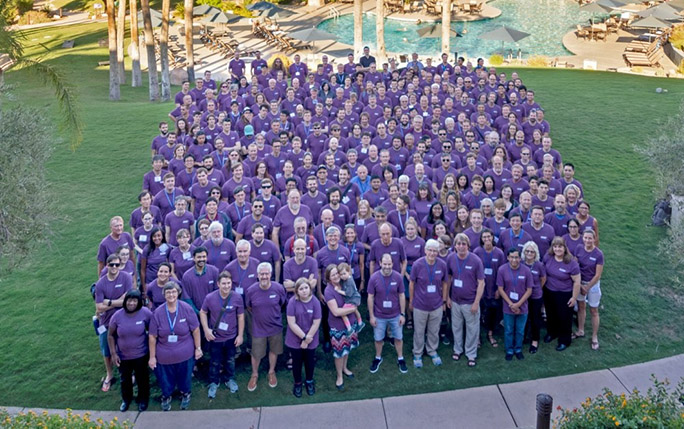LIV.DAT research presented at LSST and Community Workshop 2019

August 2019 saw Tucson’s El Conquistador resort in Arizona play host to the Large Synoptic Survey Telescope (LSST) 2019 Project and Community Workshop, an annual workshop where members of the LSST global community meet to discuss and plan the operational guidelines of LSST. LIV.DAT student Brandon Kelly was in attendance in his role as a Junior Affiliate of LSST to PI Chris Collins as part of the LSST:UK cohort representing Liverpool John Moores University’s Low Surface Brightness Science work group, a subset of the LSST: Galaxies Science Collaboration. The workshop lasted for a week and was well attended by over 300 members of science collaborations and the wider LSST community, providing a valuable opportunity for networking and discussion as well as a wide array of sessions and talks.
Each day consisted of a plenary session, covering a community-wide aspect of the LSST project, followed by parallel sessions focusing on more focused, specific aspects. Throughout the week, the plenary sessions included a talk by Tony Tyson on the effect of low orbit satellites on LSST images as well as a series of “Lightning Talks” in which members of the community briefly introduce themselves and their connection to LSST. Another key element of the plenary sessions was the overview of each science collaboration within the overall LSST project given by the respective collabration’s representative.
An unusual element of the conference was the “unconference” session, the topic of which was decided based on votes taken over the previous days. Brandon attended the low surface brightness (LSB) unconference session put forward by Sarah Brough. This was an excellent opportunity for open discussion between members of international institutions across separate LSST science collaborations covering the most significant challenges facing LSB science with LSST data. Key areas of discussion within this session included contamination from low orbit satellites, the divot problem identified by Lee Kelvin, also in attendance, and the ever present issue of the point spread function (PSF).
Brandon was given the opportunity to present his own research, as well as the research of his LJMU colleague Tom Sedgwick who could not attend, at the LSST Galaxies Science Collaboration session. This was an excellent opportunity for Brandon to present his research to the leading members of the galaxies collaboration and participate in significant discussions regarding the future of Brandon’s own research, the Galaxies collaboration and the future of LSB science with LSST.